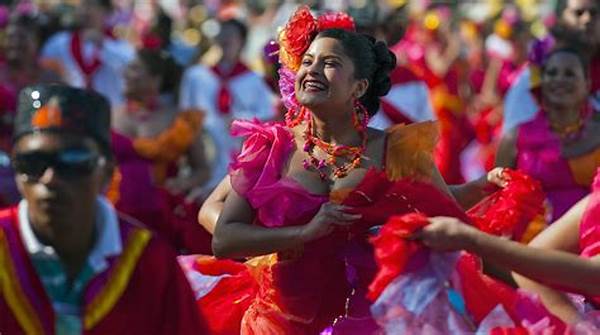When you dive into the vibrant world of cumbia, you’ll uncover a rhythm that not only gets your feet moving but also tells the rich story of Latin American diversity. Cumbia is more than just music; it’s a bridge connecting various cultures, histories, and identities. As one of the most beloved genres across Latin America, cumbia boasts a tapestry of influences that reflect the region’s dynamic diversity. With roots spanning indigenous, African, and European traditions, cumbia exemplifies the idea that music is a universal language that transcends borders. By embracing the Latin American diversity in cumbia, we don’t just listen to a beat — we celebrate a movement that unites people from all walks of life. It’s an invitation to understand and appreciate the multitude of stories and traditions woven into every note.
Read Now : Emerging Talents Audio Services
The Rhythm of Diversity
Let’s dive deep into the rhythm that defines cumbia. Originating from Colombia, cumbia quickly spread across Latin America, with each country adding its unique flavor to the mix. You’ll find the cumbia from Mexico has a distinct twist, with faster beats and more brass. In Argentina, it becomes “cumbia villera,” resonating in the shantytowns and carrying a poignant social message. In this diverse landscape, music acts as a melting pot where influences converge, creating a sound that is unmistakably Latin American. This is where the beauty lies in the Latin American diversity in cumbia — it’s not just a genre, but a narrative of cultural fusion. Each version of cumbia tells a different story, yet they all bring people together, inspiring a shared cultural experience that resonates with young and old alike.
Cumbia’s Cultural Tapestry
Now, if you’re talkin’ Latin American diversity in cumbia, you gotta check out the vibes in the clubs, where it’s always lit! Pop into a Colombian bash, and you’ll hear cumbia mixed with champeta, getting folks wild on the dance floor. Cross over to Peru, and it’s a whole different scene, with chicha cumbia bringing psychedelic rock into the mix. Meanwhile, in El Salvador, you’ll witness a tropical cumbia style that has the crowd swaying softly but surely. This scene is more than just a party — it’s a celebration of the multifaceted Latin spirit which thrives in this music. It’s living proof that even within a single genre, cultural diversity breeds creativity and binds communities across borders.
The Groove of Cumbia Everywhere
No matter where you are, cumbia bridges cultures in a way no other music can. Roll up to a street festival in Argentina, and you’ll see peeps letting loose to the sound of cumbia, laughing and dancing like there’s no tomorrow. Hit up a cumbia fusion event in Chile, and you’re looking at a blend of traditional beats with modern djembe and techno influences. This whole deal of Latin American diversity in cumbia shows that music doesn’t have borders, and it gives life to different identities in sync on the dance floor. Here, everyone’s invited to join in this evolving musical journey and feel the diverse pulses of Latin America’s proud heritage. That’s the real magic of cumbia — it unites and ignites.
The Pulse of Cultural Exchange
Celebrating Global Influence
Latin American diversity in cumbia is front and center, and it’s a groovy testament to how communities merge their own local flavors. Every cumbia track you hear is like a postcard from different corners of Latin America. Whether it’s the accordion-led melodies from Colombia or the electric guitar riffs in Mexico, each style urges you to celebrate regional differences while finding joy in what they share. The energy is always buzzing, daring you to explore the cultural depth and dive into this rhythmic exchange that keeps evolving in myriad ways.
Read Now : Definitive Reggae Playlist Insights
Rhythmic Fusion on Repeat
When you talk about Latin American diversity in cumbia, it’s impossible not to feel the beat. It’s that kind of jam that instantly pulls you in, with a sound as spicy and colorful as the culture that creates it. Whether the groove is fast or smooth, every beat encourages a celebration of diversity, urging all to feel the music’s universal language. It’s pure magic how this eclectic sound continues to evolve, reflecting the beat of millions who dance to its rhythm and connect across borders through the universal language of cumbia vibes.
